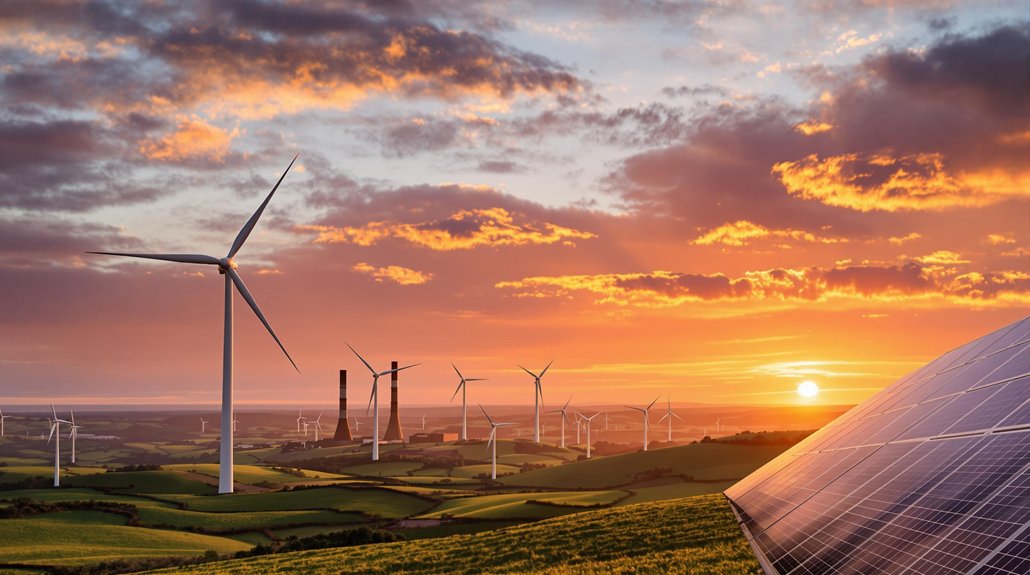Cummins isn’t putting all its eggs in the EV basket. Their “Destination Zero” strategy embraces multiple fuel technologies—renewable diesel, hydrogen, and natural gas—alongside improving traditional engines. This “Swiss Army knife” approach offers immediate emissions reductions without forcing customers to scrap existing equipment. Critics want a single solution, but Cummins stays pragmatic. Energy shifts take decades, not years. Their multi-path bet might just be brutally realistic enough to work.
Charging headfirst into a carbon-constrained future, Cummins isn’t picking favorites in the race to slash emissions. While competitors tie themselves to single technologies, the engine giant is spreading its bets across diesel, natural gas, hydrogen, batteries, and more.
While others commit to singular solutions, Cummins diversifies its emission-slashing arsenal across multiple technologies—pragmatic innovation trumping technological dogma.
It’s not sexy. But it’s smart. Their “Destination Zero” framework aims for net-zero emissions without religious devotion to any one solution. Pragmatism trumps dogma.
Internal combustion isn’t dead—not by a long shot. Especially in commercial settings where battery-electric just doesn’t cut it yet. Cummins keeps improving these workhorses while simultaneously pouring cash into alternatives.
Hedging bets? You bet. But it’s keeping them resilient while others might fall flat backing a single horse.
Take renewable diesel. All Cummins high-horsepower industrial engines can run 100% renewable diesel without modifications. Today. Not five years from now. That’s up to 90% fewer greenhouse gases with zero waiting.
Mining companies, railways, and marine operators don’t need new equipment—just different fuel. No wonder they’re smiling. Rio Tinto Kennecott’s recent transition of their entire fleet to renewable diesel demonstrates this practical approach to immediate emissions reduction.
Then there’s hydrogen—both as fuel for internal combustion engines and in fuel cells. Cummins is pushing both. They’ve joined the Hydrogen Engine Alliance to accelerate adoption in North America.
Infrastructure challenges? Sure. But they’re tackling those through partnerships while others just complain.
Flexibility matters too. Dual-fuel systems let operators switch between traditional and alternative fuels based on availability and cost. Hybrid systems combine traditional power with electric for interim benefits.
These aren’t perfect solutions. They’re bridge technologies. But bridges keep you from falling into the river while waiting for your flying car.
Their HELM platform exemplifies this approach—supporting multiple fuels in similar hardware. The availability of the industry-first X15N engine expands natural gas options for customers seeking cleaner alternatives immediately. It’s a Swiss Army knife for an uncertain shift period.
This diversified strategy aligns with projections showing wind generation will supply one-third of additional global electricity demand from 2025 to 2027.
Critics want all-in commitments to single technologies. Cummins prefers adaptability. In a world where energy shifts historically take decades—not years—their multi-path strategy isn’t just bold. It’s brutally realistic.
References
- https://www.cummins.com/news/2024/11/06/cummins-supports-mining-customer-rio-tinto-their-transition-renewable-diesel
- https://www.cummins.com/engines/on-highway/fuel-agnostic
- https://www.cummins.com/generators/alternative-fuels
- https://www.mobilityoutlook.com/features/cummins-charts-multi-path-strategy-for-sustainable-mobility-jane-beaman/
- https://www.cummins.com/news/releases/2023/08/25/cummins-announces-approval-unblended-renewable-diesel-use-all-industrial








